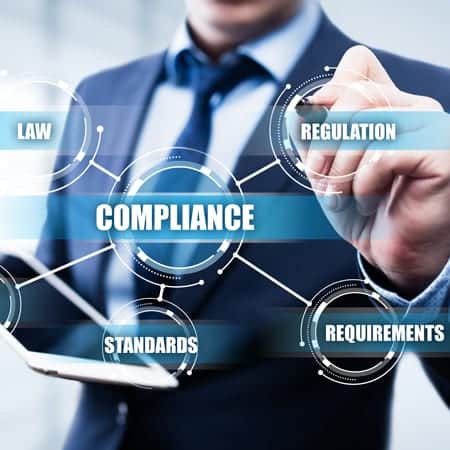Knowledge and Insights
Ready, Set, Compliance!

Is your organization required to comply with certain state, federal or industry regulatory guidelines? Are you ready for your next compliance audit? Navigating the sea of regulations that exist today can be cumbersome and costly for businesses, which often do not devote sufficient resources towards compliance audit readiness. Noncompliance, however, can cost more time and money that will hurt your organization’s bottom line. During an audit, you will be expected to provide documentation supporting your compliance. Therefore, it is crucial to take a proactive approach and put the best practices in place so that when the time comes, you will be ready.
Common Compliance Issues
Noncompliance often results from an organization’s misinterpretation of regulations, not keeping up with regulatory revisions or updates, inadequate training of staff members, and lack of monitoring or staff buy-in. Not investing in a proper compliance program, in a climate where many regulatory entities are strapped for funds, can subject your organization to heavy penalties, which will ultimately cost your organization even more.
Proper Documentation
When auditees cannot provide a backup to a claim, they often state “but we did do such and such.” And I always reply, “If you didn’t document it, it didn’t happen.” You need to be prepared to show written or electronic support — i.e., forms that have been filled out on a certain timeline, forms signed by the appropriate personnel, etc. The best approach is to study the regulations, pay attention to details, and create the proper document trail. When you come across cases with contradicting statements, implement the conservative one. When you cannot find clarification for specific issues or the clarification simply does not exist, consult a regulatory body. As a last resort, your company may need to draft and implement a company-wide procedure regarding the issue.
Why Monitoring is Key
It is not enough to put in place the proper policies and procedures in order to meet compliance requirements. The organization must make sure that, on a regular basis, everything is documented according to protocol, e.g. training, controls and monitoring. You need to train your staff accordingly so that they know how to follow the proper procedures. They must understand the importance of completing such procedures and the implications of neglecting to do so. Monitoring compliance needs to be scheduled and completed on a regular basis by a designated compliance manager and audit group within your organization or an outside firm. Investing in the compliance process will pay dividends.
For help preparing for your next audit or with compliance monitoring, please contact me at pkaplan@mercadien.com or 609-689-2416.
